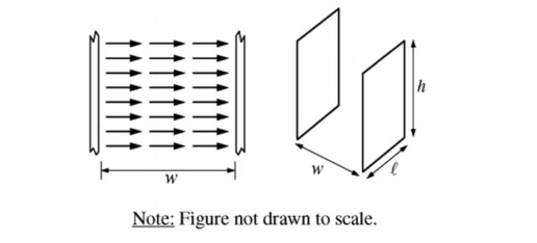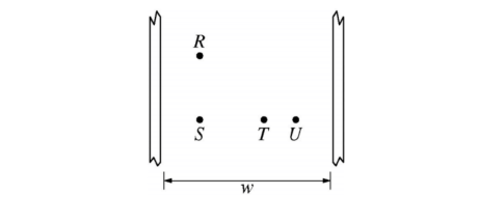4. Questions 4-7 refer to the following material.

The figure above on the left represents the horizontal electric field near the center of two large, vertical parallel plates near Earth’s surface. The plates have height h and length l, and they are separated by a distance w, as shown on the right. The field has magnitude E.
A small object with mass m= and charge +q, where m=qE/g,is released from rest at a point midway between the plates,
Points R,S,T, and U are located between the plates as shown in the figure above, with points R and T equidistant from point S. Let VRS, VST, VTU,and VRU, be the magnitudes of the electric potential differences between the pairs of points. How do the magnitudes of these potential differences compare?